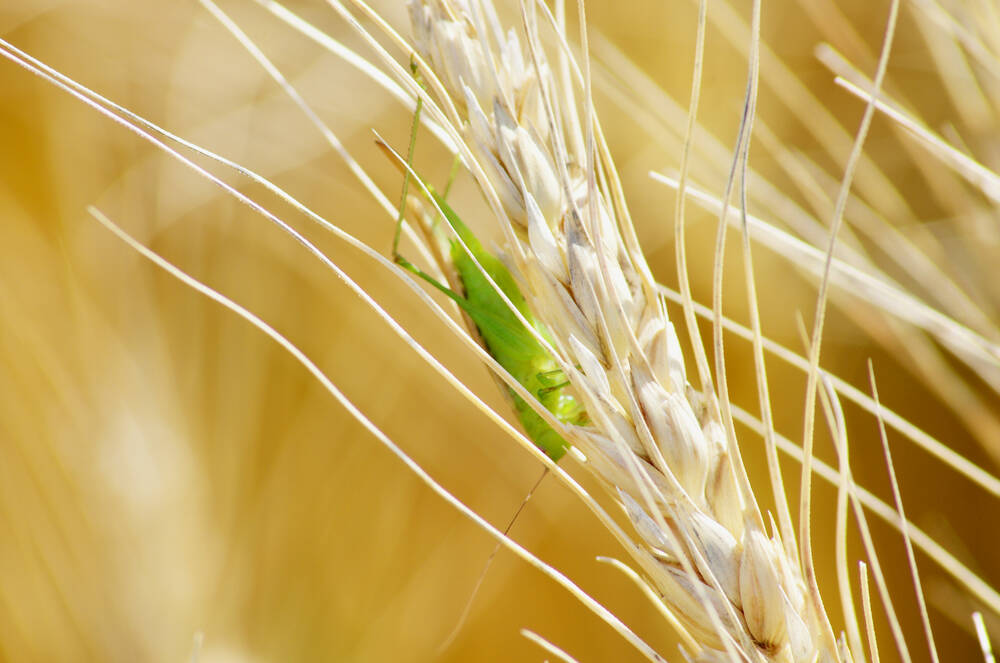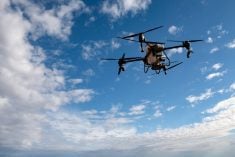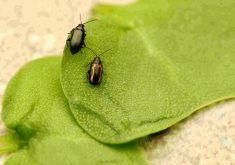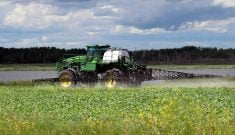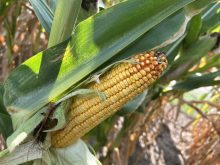Manitoba had a number of pests last year that topped John Gavloski’s short list of crop insect problems.
Of those, flea beetles were once again top concern for canola, the provincial entomologist told Manitoba Ag Days attendees. For other crops, top culprits included cutworms, armyworms, alfalfa weevil and grasshoppers. Lygus bugs also made their presence known, while aphids were problematic in field peas, soybeans and small grains.
Why it matters: Insects like flea beetles have become a yearly fight for growers, despite seed treatments or attempts to optimize management.
Read Also

Local farm businesses, groups look forward to Manitoba Ag Days 2026
Most of agriculture is seemingly at Manitoba Ag Days each January: Manitoba agribusinesses and farm groups look forward to connecting with farmers at the 2026 show.
“A lot of what happens with our insect populations is influenced very heavily by weather conditions,” Gavloski said. “April was warmer than normal. We were…at the end of April, thinking we could be in for a lot of early seeding, early plant growth, and things were looking pretty good.”
Then May and June hit. Temperatures stayed well below normal. The rain tap turned on and seemingly refused to turn off until well into summer. It wasn’t until July and August that things dried up and warmed up, with temperatures bouncing back above normal for the rest of the season. Once that tap turned off, things swung to the other extreme. The rest of the year saw below-normal rain.
Heavy rain in June does impact insect populations, Gavloski noted, as did the following heat and dryness.
Grasshoppers
The province’s weather did give Manitoba farmers a reprieve on grasshoppers, despite them still making Gavloski’s top pest lst. Just-hatched grasshoppers, as small as a wheat kernel, couldn’t handle the heavy rainfall at the beginning of the growing season, he said.
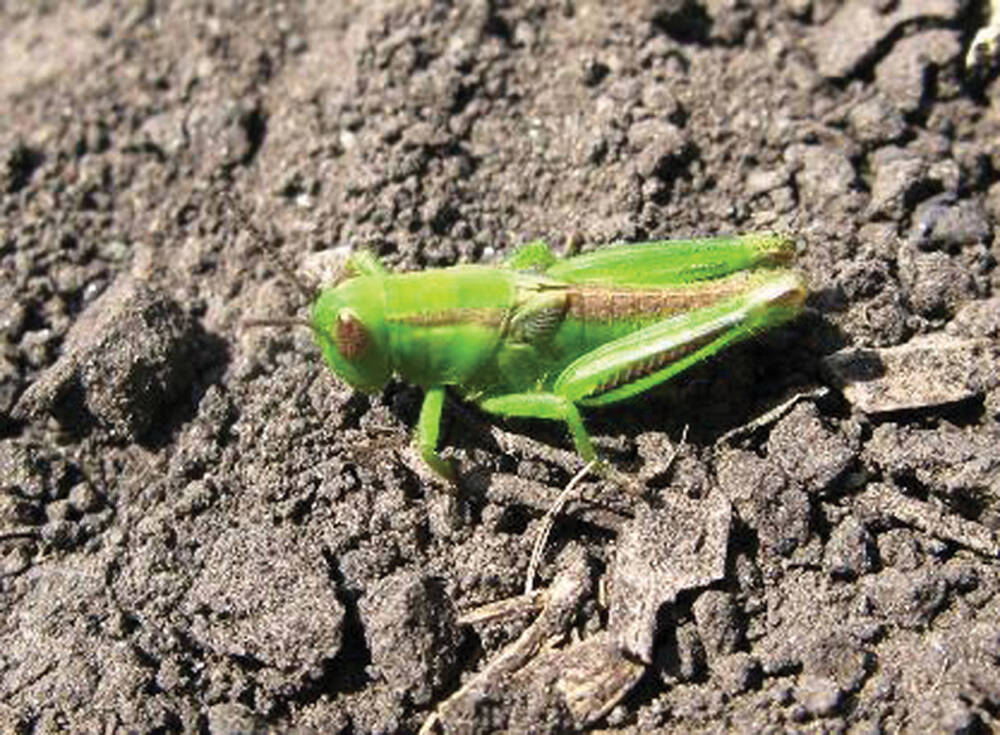
“We had our populations probably reduced somewhat in some areas because of some of that moisture early on.”
That reduction showed up when he embarked on his annual grasshopper survey of field edges this August.
That doesn’t, however, mean that producers are in the clear this year. “We had really good egg-laying conditions, so things can bounce back quickly if they get the right weather conditions,” Gavloski said.
Cutworms down
Cutworm population also declined, following a typical pattern for the insect, Gavloski said.
“They go through these cycles where they tend to build up … for a few years, they peak, and then they sort of tail off a little.”
Manitoba reached its peak for cutworms in 2019-2020, and is now on the back end.
“Last year we did have some cut worm issues. There was some spraying and even a little bit of reseeding, but when you compare it to 2019-2020, it wasn’t nearly to the same extent,” Gavloski said.
Insecticide was applied for cutworms in canola in the northwest, southwest, central Manitoba and Interlake; in oat fields in the Interlake region; in corn fields in the eastern and Interlake regions; in peas in the southwest region; in soybeans in the eastern region and in sunflowers in the central region.
Spring damage was bad enough in the southwest that some canola and corn needed to be reseeded.
Seed treatment not enough
Flea beetles also claimed canola acres again in 2024. Many canola fields seeded with neonicotinoid-treated seed still needed post-emergent insecticide, he noted. In some fields, a second or even third application also took place.
Reseeding was required in parts of central and northwest Manitoba.
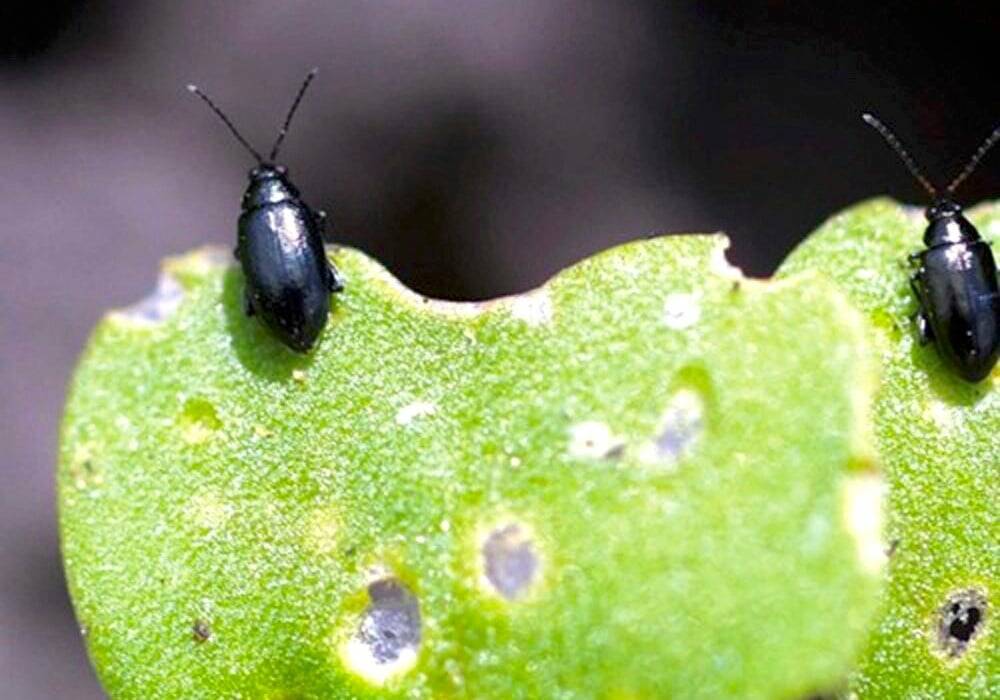
Gavloski pointed the finger at cooler temperatures, which he said inhibited canola growth and left stands lingering in vulnerable stages susceptible to extended flea beetle feeding.
Manitoba has had chronic flea beetle populations for a long time, Gavloski said.
“Really what makes the big difference is how quickly your plants can get from the day you see (them) to the three-to-four leaf stage.”
Farmers can do little about temperatures, but Gavloski advised them to do everything else possible to set their crop up for quick, early-season growth.
Farmers do have some natural friends against their No. 1 canola pest. Resources from Manitoba agriculture point to predators like lacewing larvae, big-eyed bugs, the western damsel bug, the two-lined collops and the fall field cricket. Others, like the Microntonus vittatae, a native wasp, act as a parasite to flea beetles — but whether it makes a significant dent in canola damage is largely unknown.
Other non-chemical control measures the province suggests include direct seeding; increased seeding rate; wider row spacing and larger seeds.
Lygus bugs
Control measures for lygus bugs were reported in the eastern and Interlake region in August 2024. High levels of lygus bugs were also found in canola in the northwest and central regions in August.
“We did have some fairly high levels last year … particularly the eastern region area around Niverville and south a little bit around that area,” Gavloski said.
Armyworms
To control armyworms, some rye fields in central Manitoba were sprayed. Armyworms were also found in small grain cereals in the Interlake and eastern regions of Manitoba. Insecticide was applied in some fields of meadow fescue, timothy and perennial ryegrass in the Interlake.
Aphids
English grain aphids were first found on May 28 of last year, with bird cherry-oat aphids found almost a month later. Some small grain fields also reported high aphid levels, but those same fields also had hefty populations of their predators, like lady beetles and lacewings.
Some producers opted for insecticide passes on oat and wheat fields in the northwest part of the province.
Malathion and dimethoate, two active ingredients registered for aphids in small grains, both provide broad spectrum coverage, Gavloski said, but cautioned that those aren’t fail-safe options.
The 35-day pre-harvest interval for dimethoate made that option problematic for many producers, he said, and “malathion wasn’t all that available.”
That led to a lot of producers using products registered for other insects in cereals off label, Gavloski said.
It highlights a need for more chemical options against aphids in cereals, he argued, especially more selective products that will only kill aphids and not other beneficial insects.
High levels of pea aphids were found in field peas starting in the second week of July. These affected many pea crops in western, central and Interlake Manitoba, and led to widespread spraying operations through the rest of that month.
Soybean aphids were first reported on July 10, 2024. There were some insecticide applications for the pest in eastern and central Manitoba in August. Those were matched by reports of increased lady beetle presence in some of those fields.


